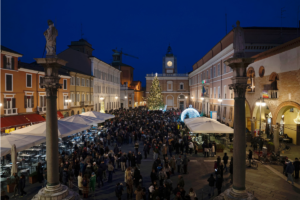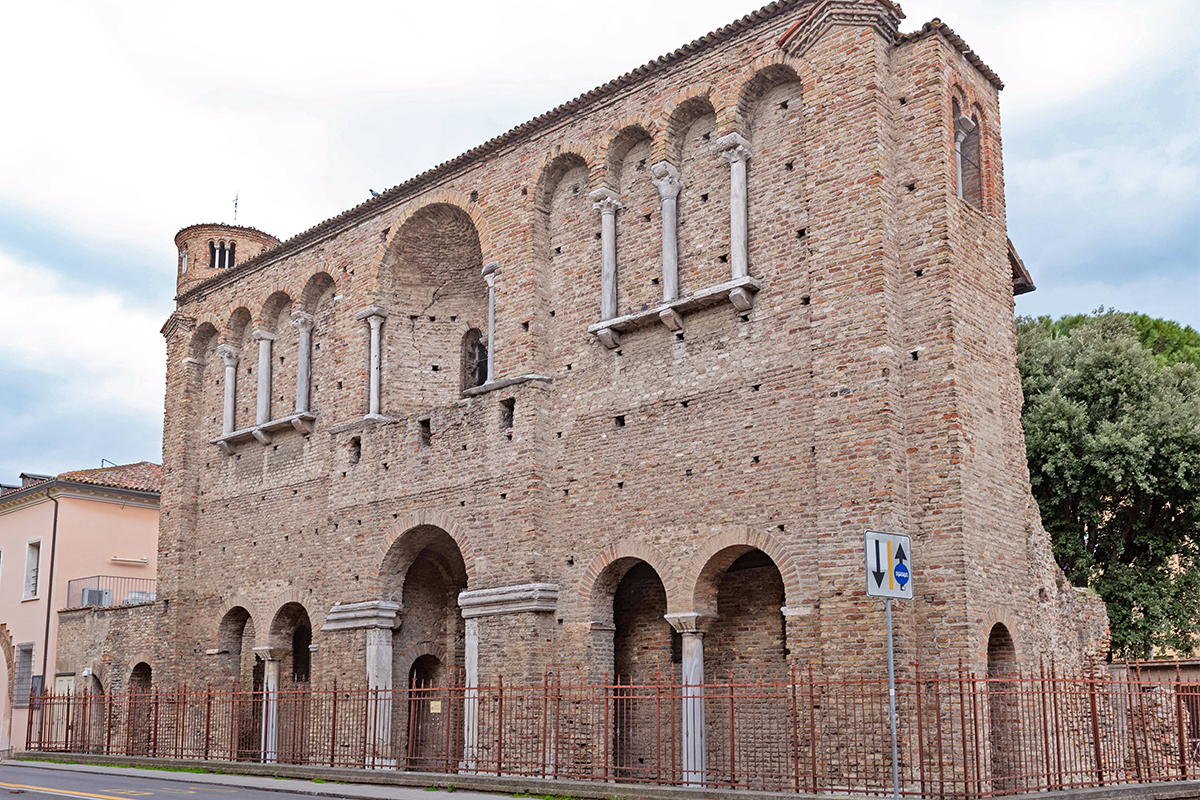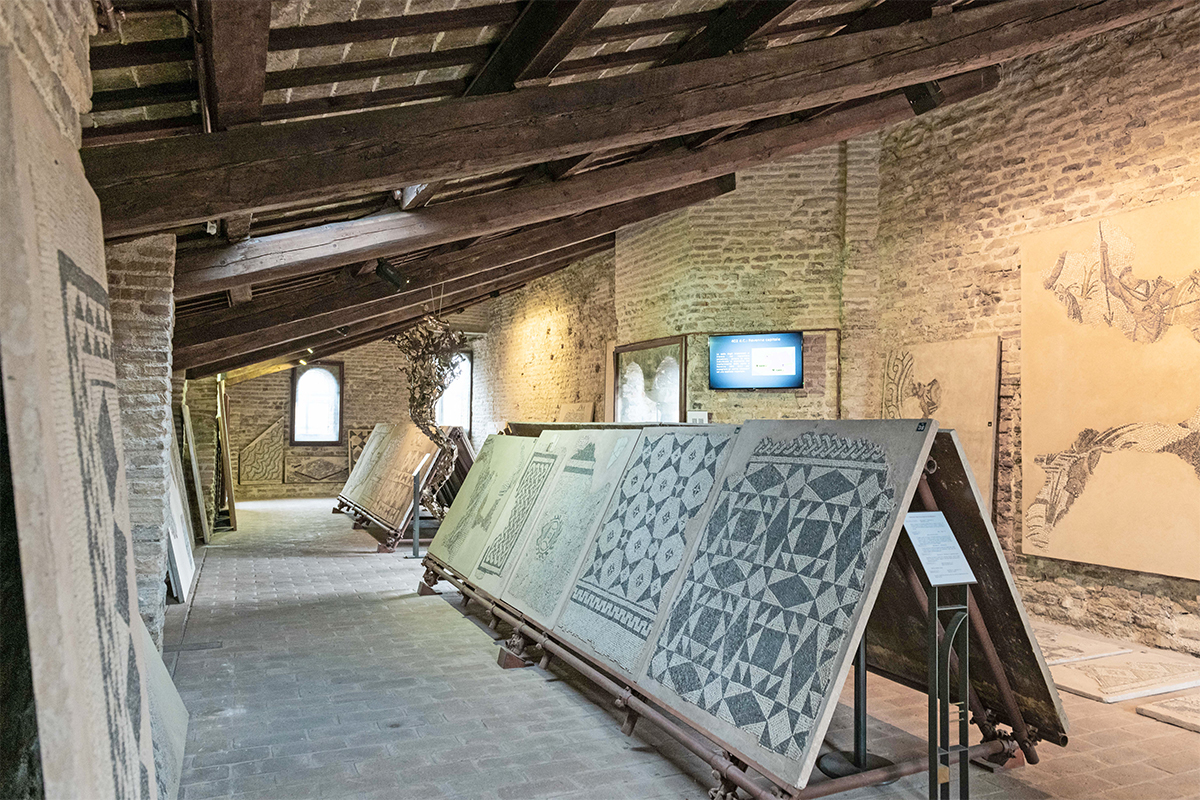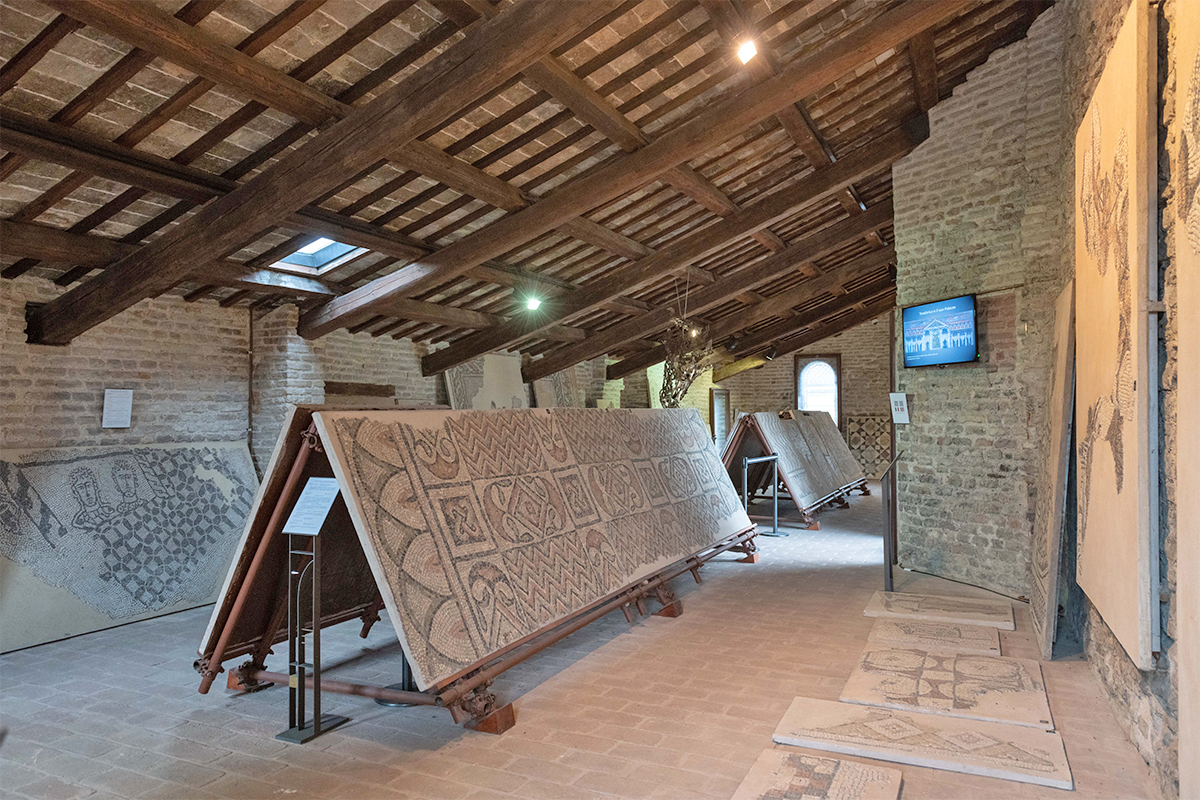The name THEODORIC’S PALACE commonly refers to the architectonic remains of a building set near the Basilica of Sant’Apollinare Nuovo. It is located in the current Via di Roma, on the corner of Via Alberoni.
A journey through history
Written sources attest that the Ostrogothic king Theodoric lived in a majestic palace located next to the Basilica of Sant’Apollinare Nuovo. This area had already been chosen as the site of the imperial court by his predecessors, Honorius and Valentinian III.
Today, along the central nave of the Basilica of Sant’Apollinare, ordered by King Theodoric himself as a palatine chapel, you will be able to see a splendid mosaic depiction of the imperial palace.
The mosaic depicts a building on two floors, with side porticoes and a larger gabled central body with an epigraph. Behind, enclosed within the walls, there are some other buildings with a circular and a basilica plan.
A palace or something else?
The remains of the building in Via di Roma are what is left of an imperial palace only by tradition. History, as it happens, is far more intriguing.
According to some scholars, the present remains might be of a guardhouse (7th -8th century), presumably built to control the access to the palace as it hosted the exarchs, i.e. the governors of the Italian provinces appointed by the Byzantine Emperor.
The house had to resemble another building in Constantinople named “Calce” (i.e. Bronze) because of its monumental bronze gate. This is the reason why also the building’s name in Ravenna was “Calce” or “Ad Calchi”.
According to others, however, what we see are the remains of a porticoed vestibule (ardica) that overlooked the then church of San Salvatore ad Calchi.
The church, so medieval sources, was apparently near the palace and the basilica; nevertheless, a document of 1503 states that in those years it was already almost completely in ruins.
This area has been an object of study since the second half of the 19th century, after a fortuitous recovery of some fragments of mosaic floor.
The most ancient layer seems to date back between the end of the 1st century BC and the beginning of the 1st century AD. Those fragments might have been of a suburban villa.
Beyond the first layer, later stratigraphies dating back to the 4th century AD follow. Since they show palatial features, they might be remains of the imperial palace of Honorius, who decided to move the capital of the Western Roman Empire in Ravenna in 402.
The documents describe a villa of considerable dimensions with rooms gravitating around a great porticoed court. Among the others, a room with an apsis and opus sectile floors (5th century AD), as well as a triclinium room with three apses and a refined mosaic floor overlooked the court.
In Theodoric’s age (493-526), the palace underwent renovation and expansion, and some of its rooms were repaved in mosaic.
Some rooms seem to have an even higher mosaic floor, maybe renovated at the end of the 6th century. Archaeological remains seem to indicate that the palace remained active until the end of the 8th century.
What to see
Through a spiral staircase in the round tower on the eastern side of the so-called Theodoric’s Palace, you can access and visit the first floor.
The archaeological diggings carried out in the area (1908-1914) brought to light portions of mosaic floors that were displayed here starting from the beginning of the 19th century. Mosaic pieces are also on the ground floor, in the tiny front loggia.









